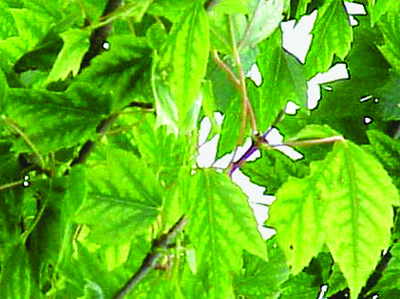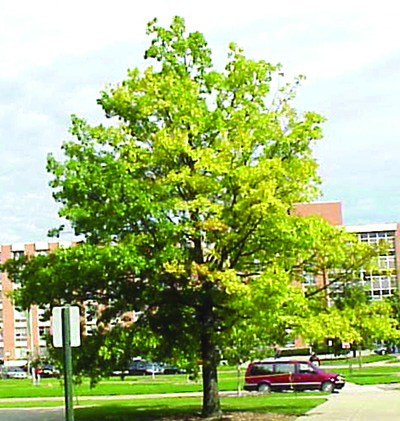Chlorosis
July 30, 2015
The term ‘Chlorosis’ refers to yellowing of the foliage and may have many different causes. Iron chlorosis is common on pin oaks, while chlorosis in red maples is commonly caused by a manganese deficiency.

Red maple leaves below, show interveinal chlorosis caused by manganese deficiency.
The availability of certain nutrients necessary for plant growth and development are limited by soil pH. In alkaline soil (pH >7.0), although these nutrients are present in the soil, they may not be in a form that can be utilized by the plant.
Management
Before attempting any treatments, determine the cause of chlorosis. Test soil to determine pH. A foliar analysis can also help confirm a nutrient deficiency. Soil amendments to lower pH, such as elemental sulfur or ammonium sulfate, or injection of micronutrients may be effective.

Iron chlorosis symptoms on pin oak.
Success has been reported using fall soil injections of ferric ammonium citrate to treat chlorotic pin oaks. Waterlogged soils may also cause foliage to appear chlorotic, especially with evergreens.
Print a PDF of this page: Abiotic injury - chlorosis



 Print
Print Email
Email



